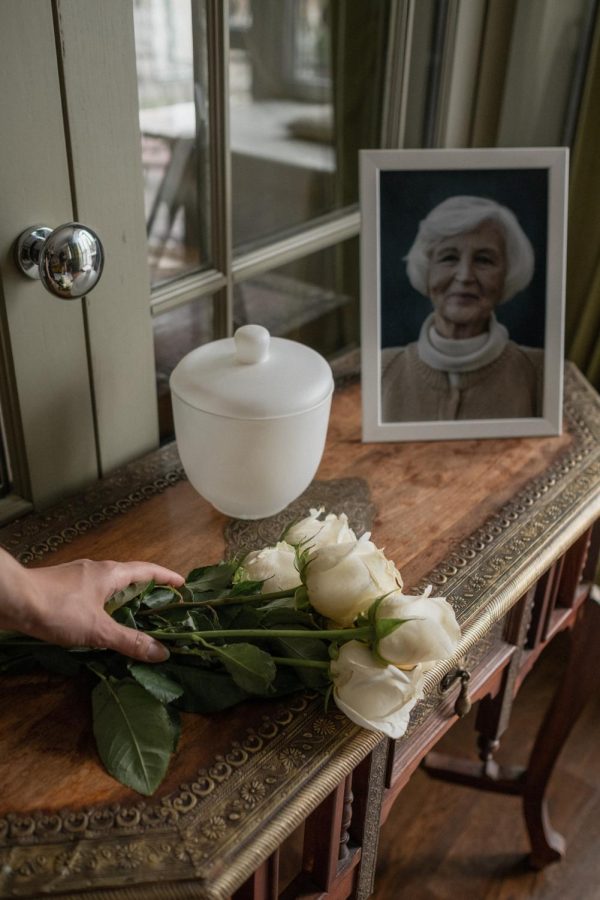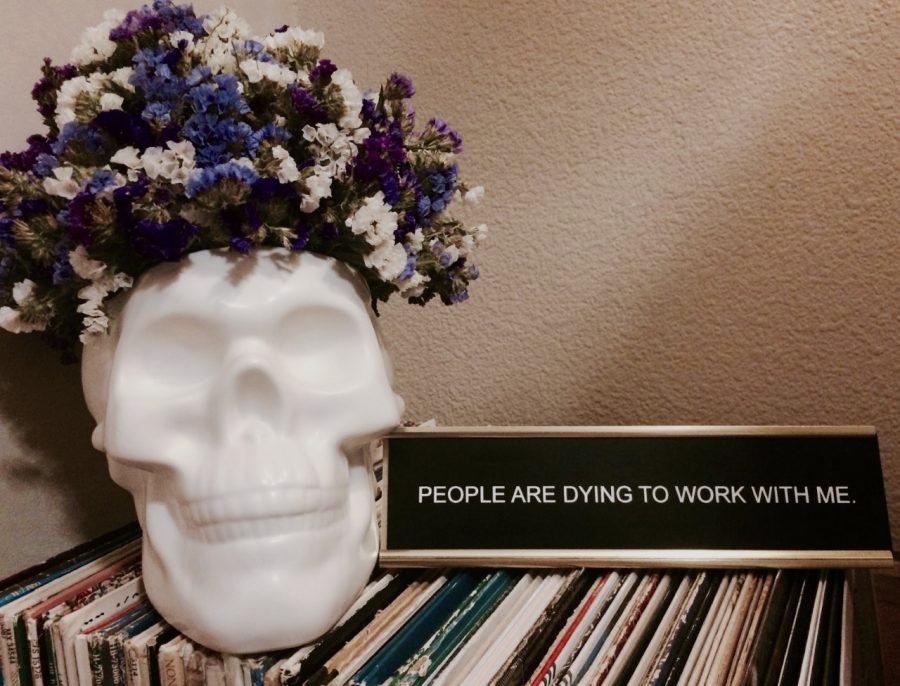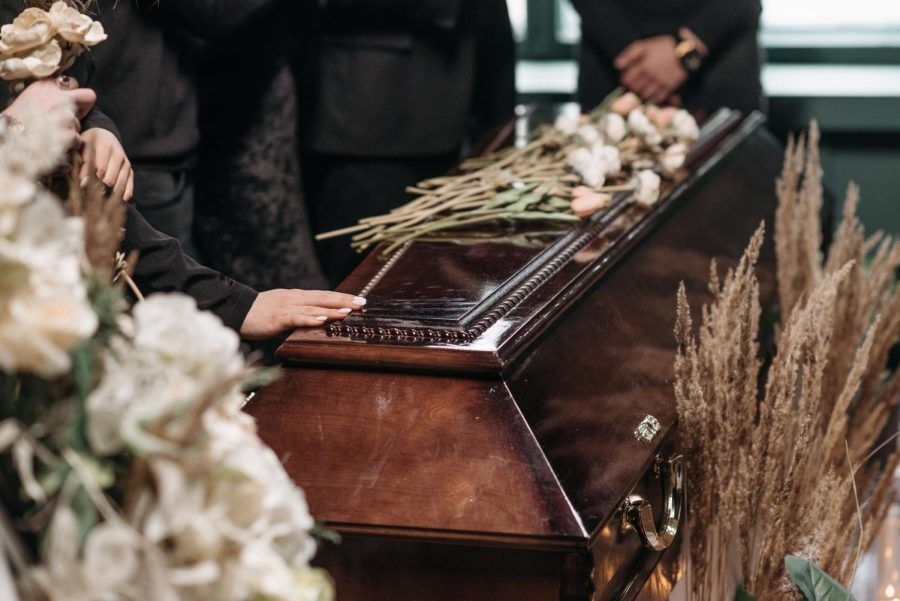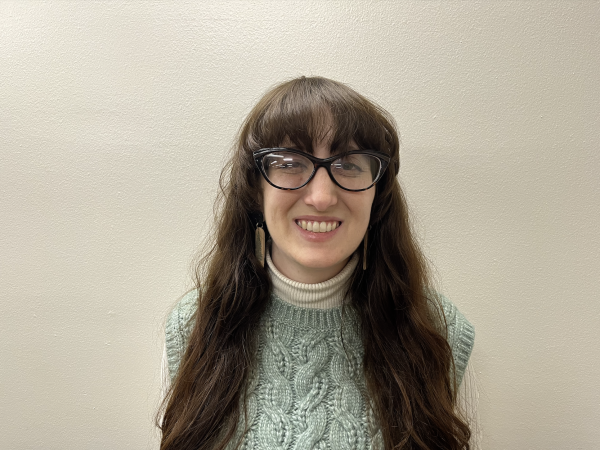When I tell people I worked at a funeral home, I expect one of several responses: they are surprised, change the subject or express how depressing they think the job is. There were some sad days during my two years of work as a funeral arranger in the deathcare industry, but I felt great satisfaction in helping and supporting people during a hard and stressful time. The lessons I learned from having a front-row seat to hundreds of families’ grief have remained with me, and there is a benefit to sharing those lessons with others.
The importance of talking about death, dying and grieving is not always fully understood in our culture and it is often treated as taboo. A 2022 study by a life insurance company, Ethos, found while Americans think about death frequently, they do not talk about it. Among other topics considered to be inappropriate or uncomfortable in polite society including money, sex, politics and religion, the study stated people would prefer to talk about anything other than death.
Despite this unwillingness or inability to talk about dying, it is a universal experience. Everyone will die, and will experience the death of people they love, whether they discuss it or not.
There have been increased efforts to start discussions around death and grief recently, as people question established funeral practices and challenge cultural norms. Organizations like The Order of the Good Death and Death Cafe began to give an appropriate forum to talk about more morbid topics.
Caitlin Doughty is a funeral professional and the creator behind the YouTube channel “Ask a Mortician.” In her book, “Smoke Gets in Your Eyes,” she writes about why it matters to talk about these issues and how speaking about death can positively impact grief.
“It is never too early to start thinking about your own death and the deaths of those you love,” Doughty said. “Accepting death doesn’t mean that you won’t be devastated when someone you love dies. It means you will be able to focus on your grief, unburdened by bigger existential questions like ‘Why do people die?’ and ‘Why is this happening to me?’ Death isn’t happening to you. Death is happening to us all.”
I saw firsthand how families were able to address their grief around the death of a loved one when they were better prepared for it. Of course, there are instances of tragedies that catch people off guard, but generally being at least a little prepared for death and funeral proceedings provides more time and mental capacity to grieve the loss.
“It is never too early to start thinking about your own death and the deaths of those you love.”
Caitlin Doughty
Another important lesson I learned about grief while assisting families is there is no singular way to grieve death.
As I worked answering phones, greeting people and taking information for death certificates, I had the privilege of talking to people of all ages, races and religious affiliations. All had experienced the death of someone they knew, but beyond that, they did not share much in common.
Some people were relieved that an elderly family member was no longer experiencing pain or chronic illness. Some were hysterical over the death of someone lost at a tragically young age. Others came in a numb state or were ready to get down to business.
I spoke to people who wanted to tell me their whole family history or love story. Others hadn’t heard from the deceased in years and had little to share.
One young woman around my age conducted herself with an almost preternatural composure for the entirety of her father’s funeral, only to break down in sobs when it was done. She told me she felt selfish because she didn’t want to take away attention from her dad, but over the course of the previous week, the rest of the family forgot her birthday had come and gone.
One of the questions I heard repeatedly was a variation of “What am I supposed to do? Is this normal?”
But there is no single way to grieve, and no way that is inherently right. Grief has as much to do with the person who died and all they represented as it does with the people who are living.
Over the years, there have been different theories and models created to explain the process of grieving. Perhaps the most well-known is the concept of the five stages of grief.
This model of grieving was originally introduced in the late 1960s by psychiatrist Elisabeth Kubler-Ross. The main takeaway from this framework was people may feel or work through emotions of denial, anger, bargaining, depression and acceptance when facing a loss.
Kubler-Ross updated the concept of the stages of grief over time, writing with David Kessler in “On Grief and Grieving”:
“They were never meant to help tuck messy emotions into neat packages. They are responses to loss that many people have, but there is not a typical response to loss as there is no typical loss. Our grief is as individual as our lives.”
Kubler-Ross acknowledged that people who reach the acceptance stage have not necessarily conquered grief. A misquoting or misunderstanding of the stages has contributed to the idea that a person can work through the stages and then move on.
This framework can still be helpful in letting people know the emotions they feel are valid and acceptable.
“Our grief is as individual as our lives.”
Elisabeth Kubler-Ross & David Kessler
However, there is another theory around grief that was introduced to me while I was working in the funeral industry which I have found more helpful and accurate to people’s experiences.
The concept of “growing around grief” was introduced by a grief counselor, Lois Tonkin, in 1996. Tonkin had spoken to a mother who lost a child and participated in an Elisabeth Kubler-Ross workshop to address her grief.
Rather than finding that her grief had disappeared as she worked through her emotions, the mother reported it instead stayed the same size, but with time “her life grew around it.”
Tonkin illustrated the model with a simple graph showing a large, white circle representing life, with a smaller, shaded circle within meant to represent grief.
“There were times, anniversaries, or moments which reminded her of her child, when she operated entirely from out of the shaded circle in her life and her grief felt just as intense as it ever had,” Tonkin wrote. “But, increasingly she was able to experience life in the larger circle.”
In the immediate aftermath of a death, it can be hard to imagine life will go on. While I was working, I often saw families over the course of several weeks or months after a death had occurred. With time and further life experiences, their grief did not disappear, but they were able to function and forge on.
Tonkin’s concept of grief is encouraging in these instances because it does not imply a person will forget their loved one or shrink their grief, but rather add to their own life after loss.
“In this way, they continue the process of integrating the loss with their lives and moving forwards,” Tonkin wrote.

It may also become easier to grieve as Americans work toward offering increased options for deathcare and the disposition of remains.
In the past, funeral activities were primarily managed at home, allowing the family to take part in meaningful rituals. Around the time of the American Civil War, the practice of embalming was popularized, and in the years following, deathcare became industrialized and commercialized, moving from inside homes to behind closed doors.
In the 1960s, around the time of Jessica Mitford’s book “The American Way of Death” which criticized the funeral industry, cremation began to rise in popularity. It was seen as a more cost-efficient form of disposition.
Today, burial and cremation are the primary options available to Americans. For those who have not made plans ahead of time, the process falls upon family members who can feel overwhelmed and left without sufficient options.
“Choice doesn’t enter the picture for the average individual faced, generally for the first time, with the necessity of buying a product of which he is totally ignorant, in a moment when he is least in a position to quibble,” Mitford wrote.
The high cost of funerals, along with the limited choice and opportunities for personalization add stress to families and leave them wondering if they made the right decisions.
While I was working, I saw people seek out ways to incorporate creativity into arrangements for their deceased friend or family member, and I saw how satisfying this could be.
There were instances of people bringing in nontraditional items to use instead of cremation urns, including canning jars or teapots belonging to the deceased. The local Indigenous community built their own caskets for tribal members on several occasions, creating something personal through community effort, often emblazoned with farewell messages and signatures.
These were ways to work around the impersonal and often more expensive options available, and they were a truer representation of the person who had died.
Thankfully, though I was only able to offer burial and cremation options while I was working, increased choices should be available to some states soon.
California recently decided to allow alternative disposition options including alkaline hydrolysis, commonly known as “aquamation” and terramation or “human composting.” Human composting will not be available until 2027, as requirements and standards are currently being put in place.
Both options are more environmentally friendly than traditional cremation, and existing terramation companies have shown an interest in involving families in the process and offering personalized service.
Green burials, where a body is not embalmed or buried in a traditional casket are legal, but often cemeteries will require specific items which make green burial impossible. Cemeteries dedicated to green burials or conservation burials are gaining interest, but are still less available than traditional options.
Further education and discussion about these topics can only open the door to providing more options for grieving families to feel they are honoring their loved ones in ways that bring them satisfaction. Through researching and spreading the word about alternative burial and cremation options, we can assist in opening the door for legislation to allow them. This can also lead to pressuring existing businesses to offer a broader range of services.

I can’t claim that I have attained a level of enlightenment from my experiences in the funeral industry that will keep me from feeling grief when those close to me die. In fact, I know the opposite will be true and their losses will hurt deeply. However, I’ve seen from the example of others that life can and will go on.
I also hope through supporting legislation and education about increased options for deathcare, I may be able to provide my loved ones and eventually myself with an appropriate, fitting end. Personally, I want to be buried in a green burial cemetery or composted!
From what I have learned, I hope I have a better grasp on the concept of my own mortality, and I am able to offer more grace and empathy to others in grief — and to myself. Those are the values I find most important from the lessons I’ve been fortunate enough to learn from both the living and the dead.
Heather Taylor can be reached at orionmanagingeditor@gmail.com








